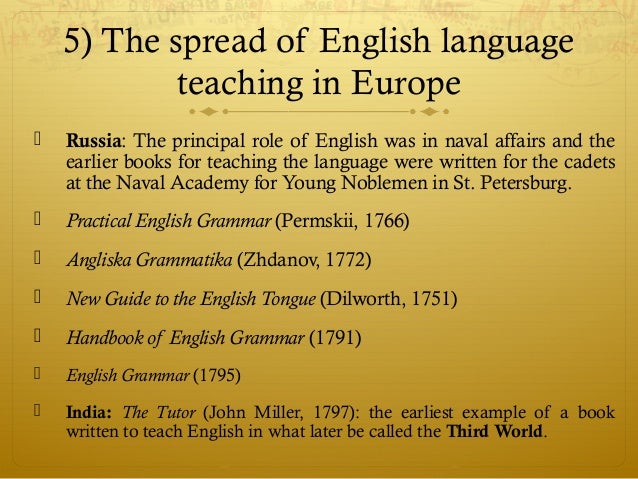PDF #27 – The History of Teaching English as a Foreign Language from a British and European Perspective
This article offers an overview of historical developments in EFL (English as a Foreign Language) teaching methodology over the last 250 years. Being based on periods rather than methods, it is intended as an alternative kind of account to the ‘method mythologies’ which have tended to dominate professional thinking for the last thirty years.

Thus, we structure our account according to four periods characterized by main concerns and overall approaches, revealing greater continuity and overlap among teaching theories and practices than in accounts which accept discrete, bounded ‘methods’ as the primary unit of organization. Confronting a conception of the past typically presented as universal but in fact reflecting a USA-centric perspective, our alternative, UK-focused and, to some extent, European version of history asserts the value of explicit geographical contextualization and indicates a new direction for the history of EFL teaching — ‘beyond method’, and in multiple locations.
In the Western world back in the 17th, 18th and 19th centuries, foreign language learning was associated with the learning of Latin and Greek, both supposed to promote their speakers’ intellectuality. At the time, it was of vital importance to focus on grammatical rules, syntactic structures, along with rote memorisation of vocabulary and translation of literary texts. There was no provision for the oral use of the languages under study; after all, both Latin and Greek were not being taught for oral communication but for the sake of their speakers’ becoming “scholarly?” or creating an illusion of “erudition.” Late in the nineteenth century, the Classical Method came to be known as the Grammar Translation Method, which offered very little beyond an insight into the grammatical rules attending the process of translating from the second to the native language.
It is widely recognised that the Grammar Translation Method is still one of the most popular and favourite models of language teaching, which has been rather stalwart and impervious to educational reforms, remaining a standard and sine qua non methodology. With hindsight, we could say that its contribution to language learning has been lamentably limited, since it has shifted the focus from the real language to a “dissected body” of nouns, adjectives, and prepositions, doing nothing to enhance a student’s communicative ability in the foreign language.
After reading “The History of Teaching English” you can check important issues for ESL teachers on the section PDFs, and visit my YouTube channel.
